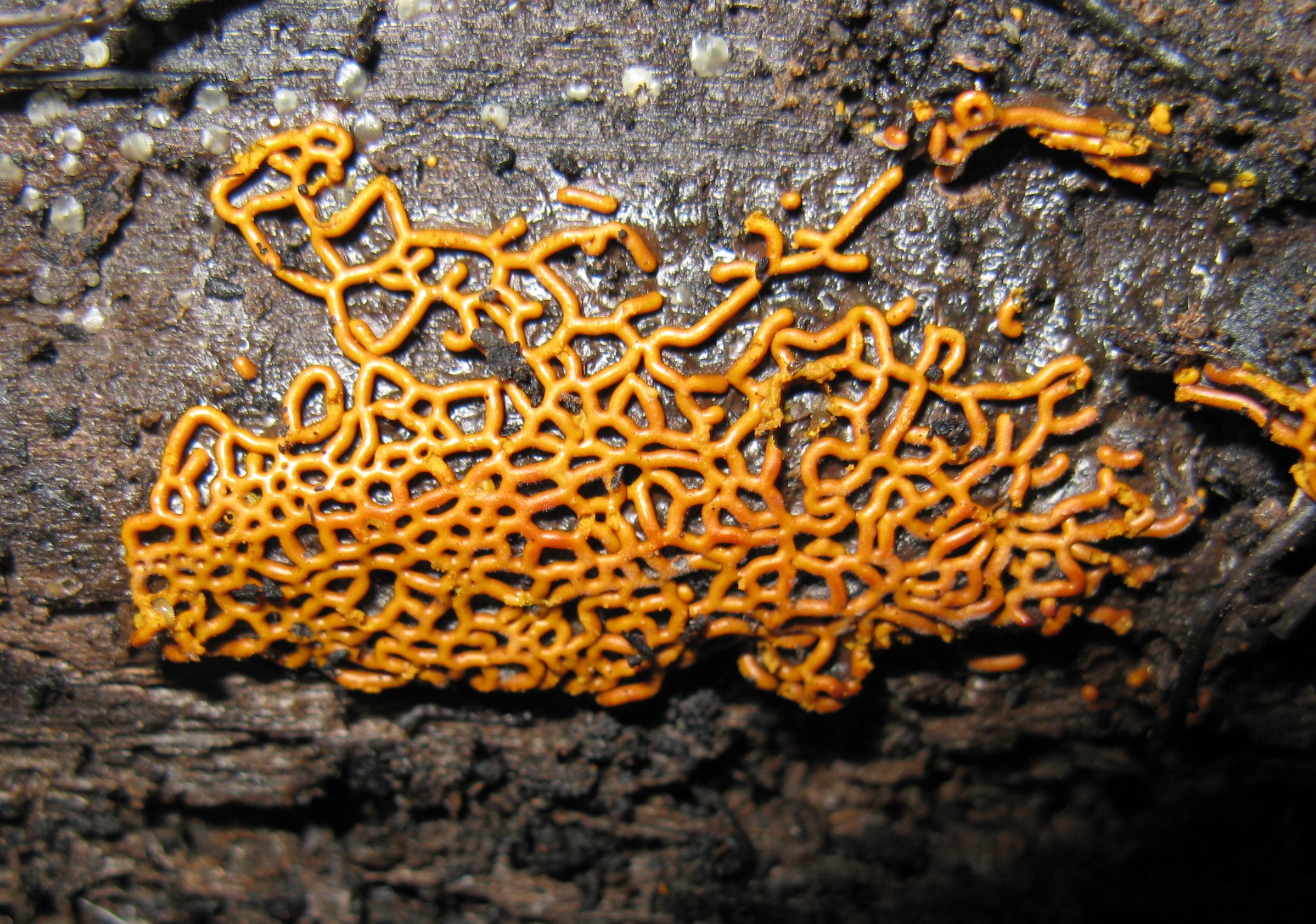Plasmodiocarp on:
[Wikipedia]
[Google]
[Amazon]
 A plasmodiocarp is a special form of
A plasmodiocarp is a special form of
 A plasmodiocarp is a special form of
A plasmodiocarp is a special form of fruit bodies
The sporocarp (also known as fruiting body, fruit body or fruitbody) of fungi is a multicellular structure on which spore-producing structures, such as basidia or asci, are borne. The fruitbody is part of the sexual phase of a fungal life cyc ...
of slime mould
Slime mold or slime mould is an informal name given to a polyphyletic assemblage of unrelated eukaryotic organisms in the Stramenopiles, Rhizaria, Discoba, Amoebozoa and Holomycota clades. Most are near-microscopic; those in the Myxogastria ...
s. It is produced if the plasmodium
''Plasmodium'' is a genus of unicellular eukaryotes that are obligate parasites of vertebrates and insects. The life cycles of ''Plasmodium'' species involve development in a Hematophagy, blood-feeding insect host (biology), host which then inj ...
concentrates during the fructification
Fructification () are the generative parts of the plant (flower and fruit) (as opposed to its vegetative parts: trunk, roots and leaves). Sometimes it is applied more broadly to the generative parts of gymnosperms, ferns, horsetails, and lycophyte ...
and pull back into the venetion of the plasmodium, from which the fruit body is created. The fruit body traces the process of the venetion, whereby the structure of its subsurface becomes plainly strand-shaped, branched, net or ring-shaped. The production of plasmodiocarps can be generic, or can be also caused by the deranged development of sporocarps or aethalia.
Slime moulds with plasmodiocarps including '' Physarum aeneum'', '' Physarum bivalve'', ''Physarum lateritium
''Physarum'' is a genus of mycetozoan slime molds in the family Physaraceae.
It contains the following species:
*'' Physarum albescens''
*'' Physarum album''
*'' Physarum andinum''
*'' Physarum bivalve''
*'' Physarum bogoriense''
*'' Physarum ...
'', '' Diderma effusum'', '' Physarella oblonga'', '' Willkommlangea reticulata'' or ''Hemitrichia serpula
''Hemitrichia'' is a genus of slime molds, of the family Trichiaceae, found within the order Trichiida. It was first described by Josef Rostafinski in 1873 and remains a well-defined genus of the slime molds. ''Hemitrichia'' species exhibit eith ...
''.Steven L Stephenson; Stempen, Henry, ''Myxomycetes : a handbook of slime molds'', Timber Press, section 7 to 10
References
Plant morphology {{plant-morphology-stub